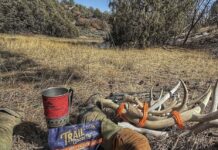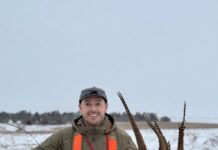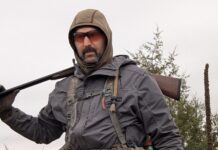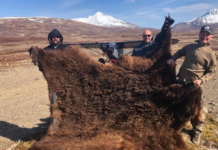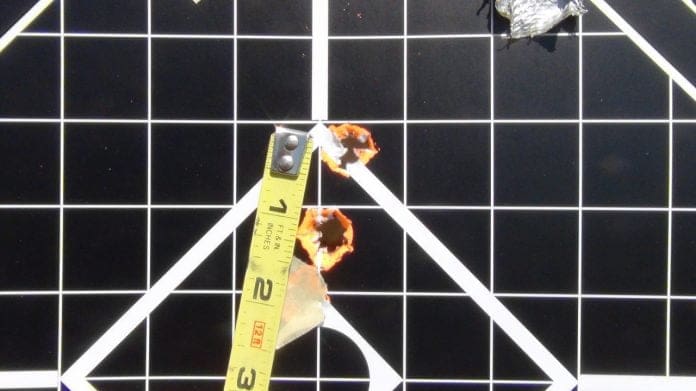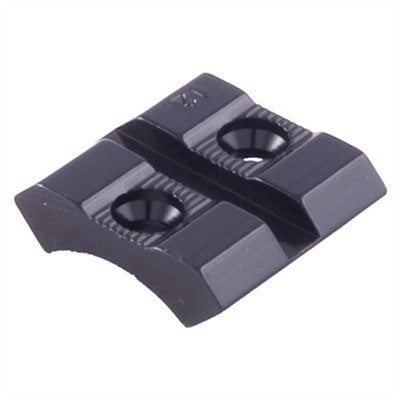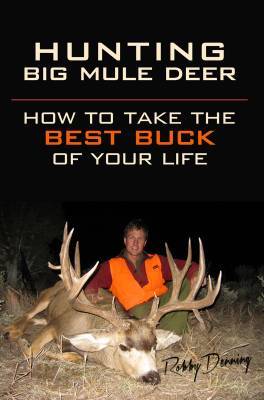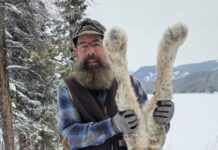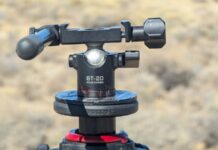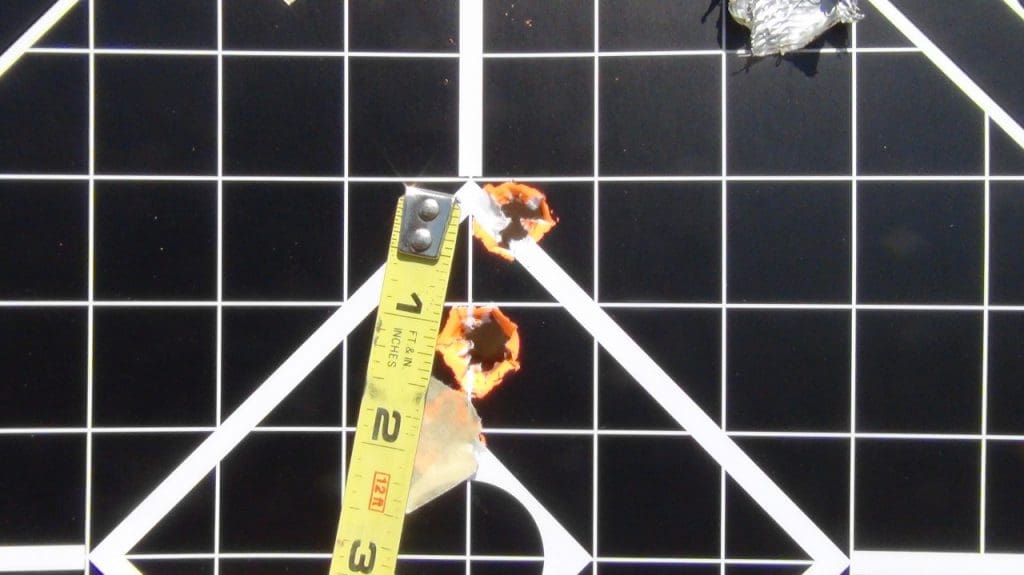
In Part I, Building an Extended Range Muzzleloader, I covered both choosing a muzzleloader and the best caliber for hunting big mule deer. In Part II, it’s time to choose the best sight and bullet.
Peep Sights
Most muzzleloaders come with some style of buckhorn sights. These are only good out to about 100 yards because the rear sight just covers up too much buck to aim accurately. Some guys can do well with them but most cannot. Peep sights are just inherently more accurate, and as the military has shown, peeps can be very accurate to even extreme yardages.
I switched to an XS Ghost Ring peep sight back in 2001 and have had really good performance and durability. The XS combines a variable aperture (using Brownells Long Shank Aperture) with a narrow front post. This means your rear sight doesn’t cover up any of the intended target like a buckhorn sight does. Combine this with the narrow front post, from which you aim off the top of, and you’re able to aim more precisely.
The sights come in Tall Weaver Backup or Low Weaver Backup Your choice will be determined by how the gun fits you. Throw the gun up with you eyes closed repeatedly. If you find that when you open your eyes, you’re looking just over the barrel of the gun, then the low should work. Be sure and call XS before ordering- their tech guys are great at steering you in the right direction.
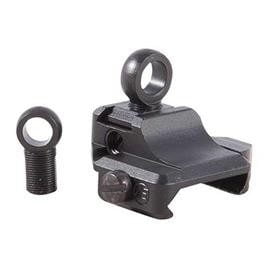
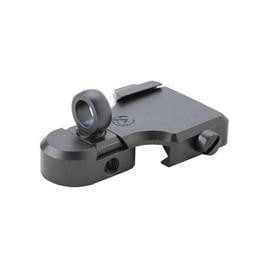
XS Tall Weaver Backup (top) and Low Weaver Backup Ghost Ring Apertures
The XS Threaded Ghost Ring Aperture on either sight accepts the Brownells Long Shank Apertures in three hole sizes, .050″, .093″ and .125″. In years of testing these in actual hunting conditions, I’ve found the .093″ is the best all-around size. If light is really fading, I can pull out the .093″ in a few seconds and just use the Ghost Ring which measures .191 (or .230 depending on what you installed).
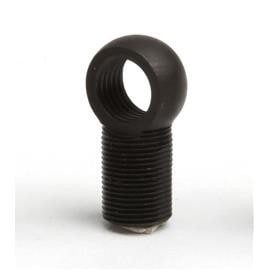

The XS threaded Ghost Ring aperture accepts the Brownells Long Shank apertures for maximum accuracy and flexibility to changing light conditions
I also recommend the Weaver style sights and bases so that you can easily switch between a scope (I recommend something in the 2-8X range, I’ll be using this Vortex HD LH 1.5-8×32) and a peep. This is for several reasons:
1) In my experience, good scopes cut your 100-yard group size by up to half (and more at extended ranges.) So by using a scope for load development, you’ve eliminated one possible variable in the accuracy equation.
2) Even if you’re hunting a state that requires a peep sight, you need to develop your load using a variable power scope. Why? As I said when I started this project, we’re building a gun for the serious mule deer hunter. The serious mule deer hunter will be applying for hunts in multiple states. Eventually he’ll be in a state that allows scopes for muzzleloader-only seasons (currently Utah, New Mexico, and Arizona.) By building your gun on the Weaver platform, you won’t be starting over if you head to a new state.
Using the Weaver platform, I can develop my load, and then immediately switch to the peep in the same range session. Weaver bases are sold everywhere (like here) but make sure you consult with your gun manufacturer so you buy the right base (hint, when installing your rear base, use the screw holes closest to the breech when possible. This increases sight radius and accuracy.)
Weaver-style base
Using the XS system above, I’ve also found my zero only needs a slight adjustment if any when switching from a peep to a scope and then back again.
Besides accurate to 200+ yards, I’ve found the XS system very dependable in the field. In many days of carrying a muzzleloader on foot, horse, and ATV, I’ve never had to re-zero (FYI, XS Sights is not a Rokslide sponsor, I just like their sights.)
I estimate that this sighting system can cut your groups in half over a buckhorn sight. If there is a downside, it is the fact that you have to make sure your peep isn’t clogged with rain, snow, or dirt. That is a good trade off for the accuracy you’ll gain.
Bullet Selection
To kill big mule deer, your bullets have to be accurate and post good terminal performance. It’s counterproductive to build a great muzzleloader then load it with cheap bullets. I started using Precision Rifle’s muzzleloader bullets in 2001. They are a top-notch pure lead bullet for extending your muzzleloader’s range and they post great terminal performance.

Typical muzzleloader velocities clock in between 1,500 and 2,200 fps at the muzzle. At these velocities, pure lead bullets perform very well (and is why some states like Idaho require them) compared to jacketed bullets. With rapid expansion and limited fragmenting, big bore lead bullets leave devastating wound channels. If you’re worried about penetration, don’t. I’ve shot two deer head on (at and under 100 yards) and found the bullets in the rear hams.
To best match the bullet to your gun, you need to know the twist rate of your gun (if you can’t find it, click here). Then match up your twist with the recommended bullets listed (here). You’re looking for a 3-star match or at least a 2-star. In many years of shooting smokepoles, I’ve never been able to get a bullet to shoot well that fell outside of these recommendations, so take your time to understand the charts before ordering.
Next time, we’ll talk powder selection, then head to the range to develop your load (and I’ll share my loading procedure- just like centerfire rifles, it matters!)
Read Part III here
To learn about the gear and tactics I use, check out my book, Hunting Big Mule Deer

